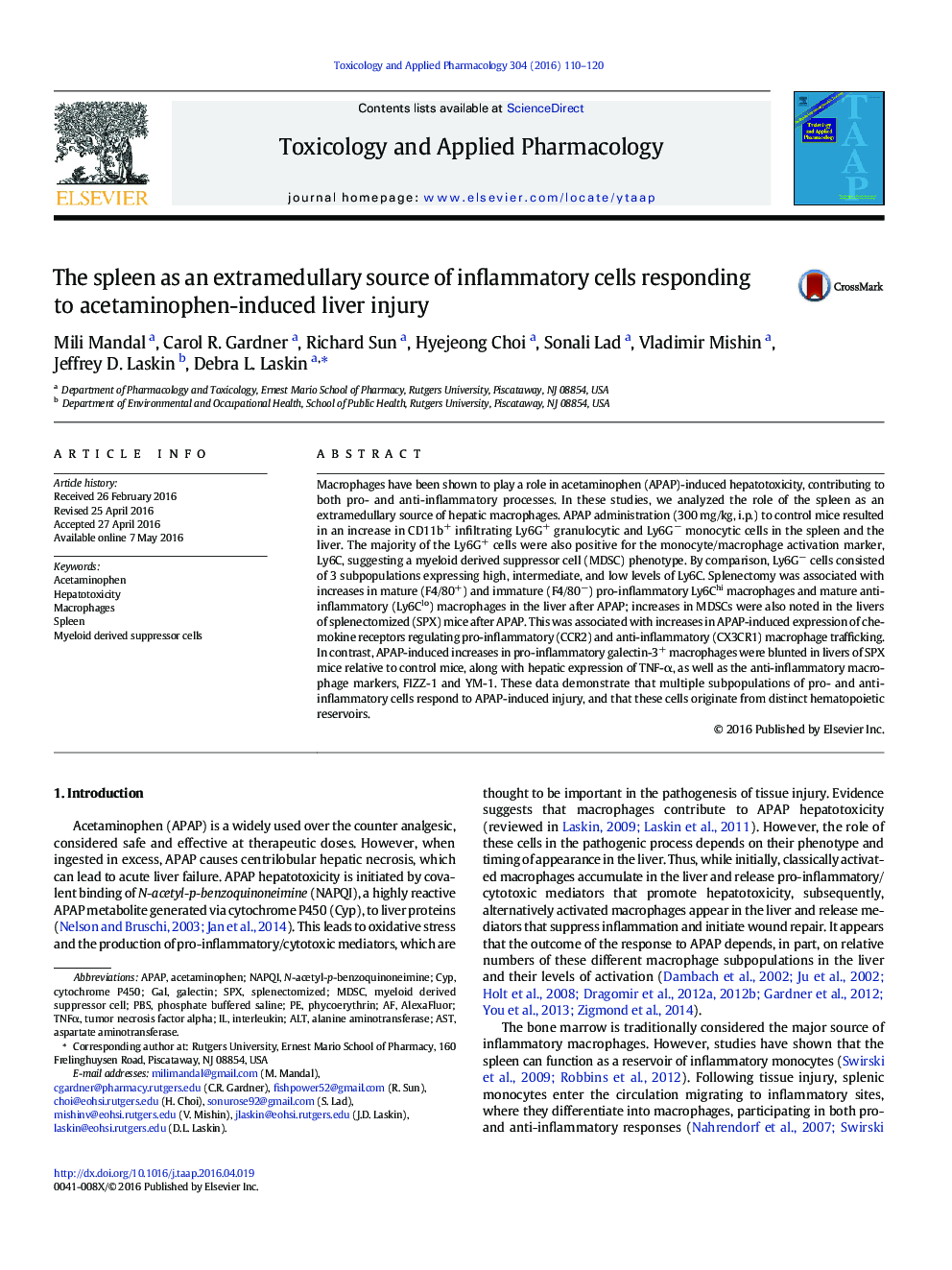| کد مقاله | کد نشریه | سال انتشار | مقاله انگلیسی | نسخه تمام متن |
|---|---|---|---|---|
| 2568030 | 1561158 | 2016 | 11 صفحه PDF | دانلود رایگان |

• Multiple inflammatory cell subpopulations accumulate in the spleen and liver following acetaminophen (APAP) intoxication.
• Splenectomy alters liver inflammatory cell populations responding to APAP.
• Inflammatory cells accumulating in the liver in response to APAP originate from the spleen and the bone marrow.
• Hepatotoxicity is reduced in splenectomized mice.
Macrophages have been shown to play a role in acetaminophen (APAP)-induced hepatotoxicity, contributing to both pro- and anti-inflammatory processes. In these studies, we analyzed the role of the spleen as an extramedullary source of hepatic macrophages. APAP administration (300 mg/kg, i.p.) to control mice resulted in an increase in CD11b+ infiltrating Ly6G+ granulocytic and Ly6G− monocytic cells in the spleen and the liver. The majority of the Ly6G+ cells were also positive for the monocyte/macrophage activation marker, Ly6C, suggesting a myeloid derived suppressor cell (MDSC) phenotype. By comparison, Ly6G− cells consisted of 3 subpopulations expressing high, intermediate, and low levels of Ly6C. Splenectomy was associated with increases in mature (F4/80+) and immature (F4/80−) pro-inflammatory Ly6Chi macrophages and mature anti-inflammatory (Ly6Clo) macrophages in the liver after APAP; increases in MDSCs were also noted in the livers of splenectomized (SPX) mice after APAP. This was associated with increases in APAP-induced expression of chemokine receptors regulating pro-inflammatory (CCR2) and anti-inflammatory (CX3CR1) macrophage trafficking. In contrast, APAP-induced increases in pro-inflammatory galectin-3+ macrophages were blunted in livers of SPX mice relative to control mice, along with hepatic expression of TNF-α, as well as the anti-inflammatory macrophage markers, FIZZ-1 and YM-1. These data demonstrate that multiple subpopulations of pro- and anti-inflammatory cells respond to APAP-induced injury, and that these cells originate from distinct hematopoietic reservoirs.
Journal: Toxicology and Applied Pharmacology - Volume 304, 1 August 2016, Pages 110–120